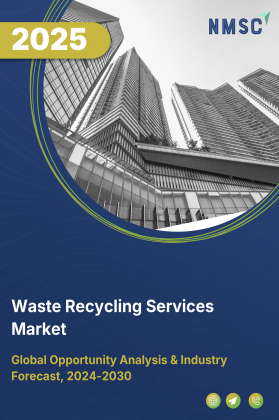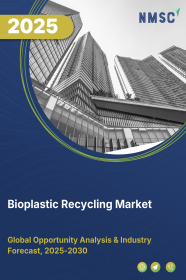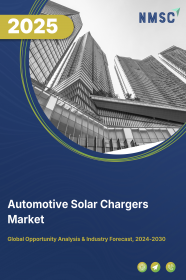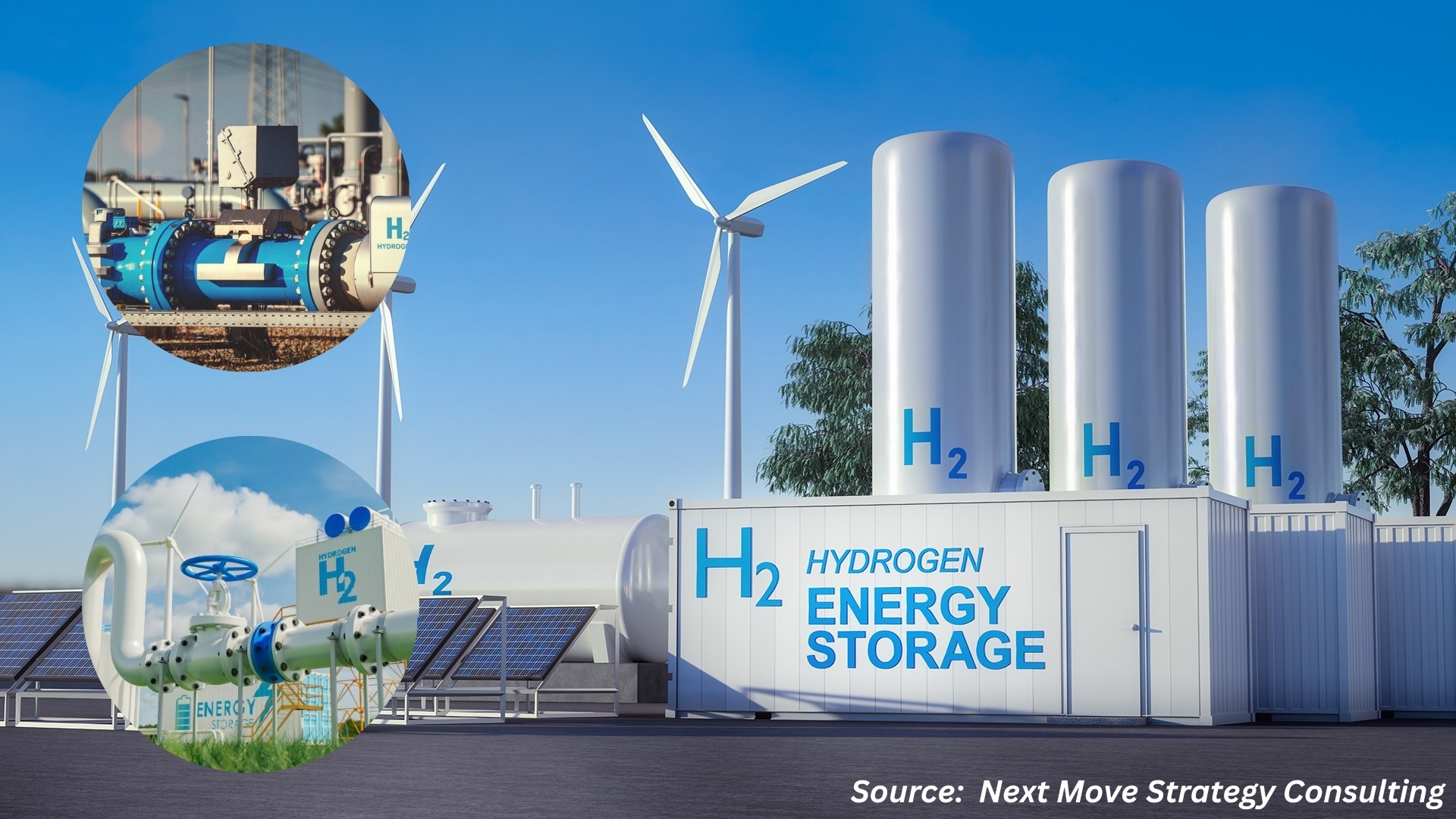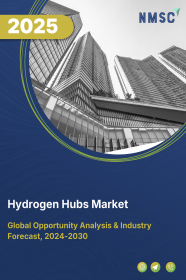
Hydrogen Hubs Market by Type (Liquid Hydrogen, Hydrogen Fuel Cells), by Supply Technique (Steam methane reforming (SMR), Electrolysis, Biomass Gasification, Pyrolysis, Nuclear Thermochemical Processes and Renewable Hydrogen Production) by Application (Hydrogen Refuelling Stations, Hydrogen Storage Facilities, Hydrogen Pipelines, and Others), and by End User (Automotive, Aviation, Marine, Space, Defense, and Others)– Global Opportunity Analysis and Industry Forecast 2025-2030
Industry Overview
The global Hydrogen Hubs Market size was valued at USD 2.35 billion in 2024 and is predicted to reach USD 2.78 billion in 2025. The industry is projected to reach USD 6.51 billion by 2030, with a CAGR of 18.5% from 2025 to 2030.
The market is growing steadily as global decarbonization goals push governments and industries to invest in centralized systems for low-carbon hydrogen production and distribution. These hubs are critical for reducing emissions in sectors like heavy industry and aviation, where electrification is difficult. Integration with renewable energy sources is enhancing green hydrogen output, while climate policies and public funding further accelerate deployment.
Although high infrastructure costs present challenges, ongoing technological advancements in production and storage are expanding growth opportunities. As a result, hydrogen hubs are becoming central to long-term energy transition strategies across regions.
Climate Mitigation Targets Fuel Large-Scale Hydrogen Hub Investments
Global commitments to reduce greenhouse gas emissions are creating strong momentum for the development of clean hydrogen infrastructure, as they serve as centralized systems for producing, storing, and distributing low-carbon hydrogen. These hubs are essential for decarbonizing heavy industries and transportation sectors that face challenges in adopting direct electrification.
Climate-focused policies and funding programs are accelerating this shift, with initiatives such as the Gulf Coast Hydrogen Hub in the U.S. and India’s National Green Hydrogen Mission actively supporting infrastructure rollout.
Backed by the EU’s REPowerEU plan, which targets 20 million tons of renewable hydrogen by 2030, governments are positioning hydrogen networks as key tools in meeting long-term climate goals. This strategic alignment is driving consistent growth across the hydrogen hubs market landscape.
Renewable Energy Alignment Strengthens Green Hydrogen Production
The integration of renewable energy into hydrogen production is a key driver for the hydrogen hubs market growth, supporting the generation of green hydrogen through electrolysis. These hubs offer a solution to renewable energy intermittency by converting excess solar or wind power into storable hydrogen, ensuring energy reliability.
India’s 2024 clean energy policies, such as the Andhra Pradesh Integrated Clean Energy Policy, have laid the foundation for solar-based hydrogen hubs. In Europe, the USD 450.08 million awarded through the European Hydrogen Bank for Italy’s hub project illustrates a similar trend. This alignment of hydrogen with renewables is expanding the market by enabling clean hydrogen production that aligns with national sustainability goals.
Aerospace Industry’s Transition Accelerates the Hydrogen Hubs Market Demand
The aerospace sector’s commitment to decarbonization is increasing the demand for hydrogen hubs capable of supplying clean fuel for next-generation aircraft. As hydrogen gains traction as a zero-emission alternative for aviation, infrastructure investments are scaling up to support this shift.
For instance, the Airbus 2024 plans to establish hydrogen ecosystems at airports and the world’s first hydrogen-powered cruise ship under construction in Italy reflect new transport applications. These developments drive the need for regional hubs, such as the Pacific Northwest Hydrogen Hub launched in 2024, to meet the energy demands of sustainable aviation. The aviation sector’s involvement is expanding the scope and scale of hydrogen hubs, contributing to sustained market growth.
High Capital Requirements for Infrastructure Development Limit Market Scalability
The hydrogen hubs market expansion faces a major restraint due to the substantial upfront investment needed to build complete infrastructure. Developing large-scale production units, storage systems, distribution pipelines, and refueling stations involves high capital expenditure, often exceeding the financial capacity of smaller firms or emerging economies.
While government funding supports early-stage projects, long-term scalability remains constrained without sustained private investment. These financial barriers slow down the pace of hub development and can delay project timelines, making it difficult for some regions to fully capitalize on the growing demand for low-carbon hydrogen.
Advancements in Hydrogen Technologies Creates Growth Opportunities
Ongoing technological progress in hydrogen production, storage, and fuel cell systems is creating significant growth potential for the market. Improved methods such as proton exchange membrane (PEM) and alkaline electrolysis are enhancing hydrogen generation efficiency and scalability.
In April 2024, researchers at the University of Cambridge developed a solid-state hydrogen storage method using MOF-808-Hf material, enabling higher storage capacity with improved safety at lower pressures. At the same time, continuous improvements in proton exchange membrane fuel cells (PEMFCs) and solid oxide fuel cells (SOFCs) are boosting system performance and lifespan across transport and industrial sectors. These innovations support the development of more efficient and cost-effective hydrogen infrastructure, encouraging broader adoption and investment in hydrogen hubs worldwide.
Market Segmentations and Scope of the Study
The hydrogen hubs market report is segmented on the basis of type, production, application, end user and region. On the basis of type, the market is divided into liquid hydrogen, hydrogen fuel cells. Based on supply technique, the market is segmented into steam methane reforming (SMR), electrolysis, biomass gasification, pyrolysis, nuclear thermochemical processes and renewable hydrogen production. Based on application, the market is categorised into hydrogen refuelling stations, hydrogen storage facilities, hydrogen pipelines and others. On the basis of end user, the market is divided into automotive, aviation, marine, space, defense and others. regional breakdown and analysis of each of the aforesaid segments includes regions comprising of North America, Europe, Asia-Pacific, and Rest of the World (Row).
Geographical Analysis
North America's hydrogen hubs market share is gaining momentum due to strong federal funding and public-private partnerships. The U.S. Department of Energy’s USD 7 billion H2Hubs initiative is supporting seven hubs nationwide, including the Gulf Coast and Arches hubs set for 2024–2025. These projects focus on supplying low-carbon hydrogen to industrial and transport sectors.
The Pacific Northwest Hydrogen Hub, launched in 2024, targets clean hydrogen supply for aviation and freight. Despite infrastructure cost-related delays, private-sector efforts like CF Industries’ joint venture with Jera and Mitsui for low-carbon ammonia production are reinforcing North America’s leadership in hydrogen deployment.
Europe’s hydrogen hubs market growth is driven by ambitious climate policies and integration of renewable energy. The EU’s REPowerEU plan, updated in 2024, aims to meet 20 million tons of hydrogen demand by 2030 and supports initiatives through the European Hydrogen Bank. A notable example includes the USD 450.08 million investment in Italy’s green hydrogen hub. Germany’s hydrogen pipeline, expected to cover 525 kilometers by 2025, will link hubs to major industries. Further innovation is seen in the UK’s upcoming national hydrogen hub and Italy’s hydrogen-powered cruise ship, underlining Europe’s role in industrial and transport decarbonization.
The Asia-Pacific hydrogen hub market is expanding rapidly through government programs and renewable integration. India’s National Green Hydrogen Mission, with a budget of USD 2.37 billion, aims to build at least two hubs by 2025–2026, including a USD 2.16 billion project in Andhra Pradesh for export-oriented production. Japan’s 2025 tender of USD 6.67 million supports hydrogen applications across key sectors.
Bilateral initiatives, such as India-UK collaboration on green hydrogen standards, are improving regulatory alignment. Private partnerships like BPCL and Sembcorp are further enabling clean hydrogen generation, positioning APAC as a global hub for production and exports.
Emerging regions are becoming active in the hydrogen hub market by leveraging renewables and long-term net-zero targets. Dubai’s 2025 partnership between DEWA and South Korean firms focuses on hydrogen use for industrial and mobility needs.
Saudi Arabia’s USD 8.4 billion NEOM project is a cornerstone for green and blue hydrogen development, supporting its 2060 carbon neutrality target. Though infrastructure is still developing, resource-rich nations like UAE and Saudi Arabia are preparing to become major hydrogen exporters. These initiatives are creating a foundation for future market expansion across the Middle East, Africa, and Latin America.
Competitive Landscape in the Hydrogen Hubs Industry
The hydrogen hubs industry is becoming increasingly competitive, with key players such as Airbus, Aramco, BayoTech, Linde plc, Shell, Chevron, Iwatani, Messer Group, and FuelCell Energy advancing through strategic collaborations, investments, and significant infrastructure developments.
For instance, Airbus, in partnership with Groupe ADP and Air Liquide, started developing hydrogen hubs at airports in June 2024, while also launching feasibility studies for hydrogen-powered aircraft in September 2024. In parallel, Aramco made a substantial commitment to the sector by investing USD 8.4 billion in NEOM’s green hydrogen project in May 2025, alongside a partnership with Repsol in April 2024 for a USD 11.20 million green hydrogen plant. Linde also contributed to the market by securing a USD 10.08 million green hydrogen supply deal with Evonik in April 2024, followed by the launch of a 9 MW electrolyzer in Singapore in July 2024.
Meanwhile, Shell and Iwatani joined forces to develop hydrogen refueling stations in California in July 2024, highlighting their continued investment in infrastructure. BayoTech and Chevron, working together since March 2024, have focused on on-site hydrogen production, while FuelCell Energy collaborated with Chart Industries in May 2024 for carbon capture technology and initiated a large-scale electrolyzer project in Malaysia by August 2024.
Lastly, Messer has supported the development of Germany’s hydrogen pipeline, set to be completed by December 2025. These coordinated efforts by leading companies are crucial to scaling hydrogen infrastructure globally and strengthening their competitive positions in the market.
Key Benefits
-
The report provides quantitative analysis and estimations of the sector from 2025 to 2030, which assists in identifying the prevailing hydrogen hubs market opportunities.
-
The study comprises a deep-dive analysis of the current and future hydrogen hubs market trends to depict prevalent investment pockets in the industry.
-
Information related to key drivers, restraints, and opportunities and their impact on the market is provided in the report.
-
Competitive analysis of the players, along with their market share is provided in the report.
-
SWOT analysis and Porters Five Forces model is elaborated in the study.
-
Value chain analysis in the market study provides a clear picture of roles of stakeholders.
Hydrogen Hubs Market Key Segments
By Type
-
Liquid Hydrogen
-
Hydrogen Fuel Cells
By Supply Technique
-
Steam Methane Reforming (SMR)
-
Electrolysis
-
Biomass Gasification
-
Pyrolysis
-
Nuclear Thermochemical Processes
-
Renewable Hydrogen Production
By Application
-
Hydrogen Refueling Stations
-
Hydrogen Storage Facilities
-
Hydrogen Pipelines
-
Others
By End User
-
Automotive
-
Aviation
-
Marine
-
Space
-
Defense
-
Others
By Region
-
North America
-
The U.S.
-
Canada
-
Mexico
-
-
Europe
-
The U.K.
-
Germany
-
France
-
Italy
-
Spain
-
Denmark
-
Netherlands
-
Finland
-
Sweden
-
Norway
-
Russia
-
Rest of Europe
-
-
Asia-Pacific
-
China
-
Japan
-
India
-
South Korea
-
Australia
-
Indonesia
-
Singapore
-
Taiwan
-
Thailand
-
Rest of Asia-Pacific
-
-
Rest of the World (RoW)
-
Latin America
-
Middle East
-
Africa
-
Key Players
-
Airbus
-
Saudi Arabian Oil Company (Aramco)
-
BayoTech
-
Linde plc
-
Shell PLC
-
Chevron Corporation
-
Iwatani Corporation
-
Messer Group GmbH
-
FuelCell Energy
-
Air Liquide
-
Plug Power
-
Ballard Power Systems
-
Siemens Energy
-
ACWA Power
-
Nel Hydrogen
REPORT SCOPE AND SEGMENTATION:
|
Parameters |
Details |
|
Market Size in 2024 |
USD 2.35 billion |
|
Revenue Forecast in 2030 |
USD 6.51 billion |
|
Growth Rate |
CAGR of 18.5% from 2025 to 2030 |
|
Analysis Period |
2024–2030 |
|
Base Year Considered |
2024 |
|
Forecast Period |
2025–2030 |
|
Market Size Estimation |
Billion (USD) |
|
Growth Factors |
|
|
Countries Covered |
28 |
|
Companies Profiled |
15 |
|
Market Share |
Available for 10 companies |
|
Customization Scope |
Free customization (equivalent to up to 80 working hours of analysts) after purchase. Addition or alteration to country, regional, and segment scope. |
|
Pricing and Purchase Options |
Avail customized purchase options to meet your exact research needs. |

















 Speak to Our Analyst
Speak to Our Analyst



